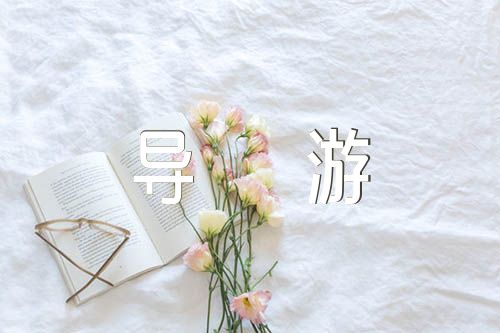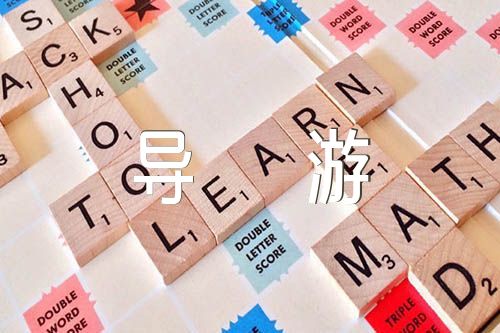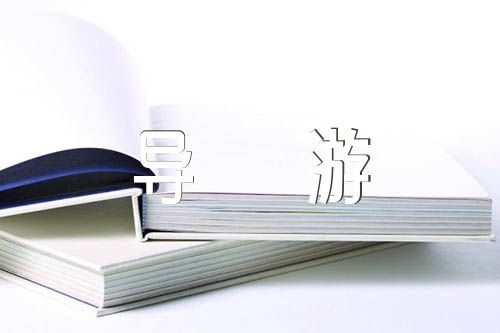【www.gzgfw.com--英文导游词】
随着我国旅游行业的快速发展,越来越多的外国友人到我国旅游,所以在我国旅游可持续发展进程当中英语导游十分重要。以下是为大家整理的优质英文导游词集合3篇,欢迎品鉴!

第1篇: 优质英文导游词
Locating between 10004’-10016’east longitude and 2703’-2740’ north latitude, Jade Dragon Snow Mountain (Yulong Mountain) is the southernmost glacier in the Northern Hemisphere. Consisting of 13 peaks, among which Shanzidou is the highest one with an altitude of 5,600 meters (18,360 feet), Jade Dragon Snow Mountain stretches a length of 35 kilometers (22 miles) and a width of 20 kilometers (13 miles). Looking from Lijiang Old Town in the south which is 15 kilometers (nine miles) away, the snow-covered and fog-enlaced mountain resembles a jade dragon lying in the clouds, hence, the name Jade Dragon Snow Mountain.
According to the geologists’ research, for about 400 million years the area around Jade Dragon Snow Mountain was the ocean and it was during the last 600 thousand years that the different landscapes had come into being because of the uprising of the lithosphere. Archaic legend about this mysterious and beautiful snow mountain goes like this: Once upon a time, Jade Dragon Snow Mountain and Haba Snow Mountain were twins. They had lived on panning in Golden Sand River until one day an evil fiend usurped the river. The brothers were very brave and had a fierce fight with the fiend, Haba died in the fight and Jade Dragon drove off the fiend after wearing out 13 swords. For guarding the people and preventing the return of the fiend, Jade Dragon held the 13 swords in hands day and night. As time passed, the brothers had turned into the two snow mountains, and the 13 swords had become the 13 peaks. Jade Dragon Snow Mountain is a holy mountain for the local Naxi people not only because of the legend, but also because long time ago, it was a place for young lovers to sacrifice their young lives in honor of true love and to escape from the arranged marriages and feudal ethics.
Jade Dragon Snow Mountain is a sanctuary for rare animals and wild plants. In fact, one fourth of all plant species in China can be found here and 20 primeval forest communities shelter a big family of 400 types of trees and 30 kinds of animals which are protected by the state. These species live in different temperature levels and create different kinds of views of Jade Dragon Snow Mountain. The 13 peaks, which have the altitudes of at least 4,000 meters, are covered by snow all year round; the mountain is called the "Natural Glacier Museum" for it has all types of glacier. Move down from the mountaintop and you can see rivers and pools, which are formed by the thawed snow water running along the valley and through the forests. The plants and the animals are different according to the altitude, so are the views. Every sight brings you a surprise and every step takes you to a new scene. Each of the meadows on Jade Dragon Snow Mountain has its own special character due to their different landscape and height. For instance, Yunshanping (Spruce Plateau) is grassland with gigantic spruces whilst Ganhaizi (Dry Sea) used to be a highland lake as its name tells, the meadow was formed after the water had dried up. Jade Dragon Snow Mountain now is a famous scenic spot for sightseeing, mountaineering, skiing, exploration, scientific research and taking holiday. Besides, widespread legends and myths of the Naxi ethnic minority and the unclimbed Shanzidou are all important attractive spots for those who come to Jade Dragon Snow Mountain.
第2篇: 优质英文导游词
Ten kilometers (six miles) northwest of Lijiang Old Town, there are several ancient villages, including Baisha, Dayan, Shuhe, Yangxi and Xuesong. There, the invaluable Lijiang Mural is stored, preserved and displayed in 15 venerable temples, such as Juexian, Wande, Guiyi temples and Sanbi Garden. Altogether, the mural used to include more than 200 pieces of fresco. However, hundreds of years of historical vicissitudes have left only 55 pieces in good condition. The most famous frescos are known as Baisha Mural of the Dabaoji (Great Treasure) Palace and the Colored Glaze Temple (Liuli Dian) in the town of Baisha.
Most of the temples were built from the early days of the Ming Dynasty (1368-1644) to the early Qing Dynasty (1644-1911), and the Lijiang Mural was created at the same time, over the course of about 300 hundred years. In Lijiang, it was an era of rapid economic development, mutual acculturation of multinational culture, and the growth of religions. Accordingly, Lijiang Mural was an artistic representation of this cooperation, communication and progress. The authors of these mural paintings had come from different nations, including the local Naxi Dongba painters; the Taoist painter Zhang from the Central Plain; an Lama artist Guchang; Han painters Ma Xiaoxian and Li Zeng; and many other artists who were unknown to the public
The originality and figures of the mural paintings reflect the different religious cultures and artistic forms of Buddhism, Lamaism, Daoism and the Naxi Dongba religion, as developed in a Naxi school. Therefore, Lijiang Mural is quite different from other frescos. Each painting includes at least one hundred portraits, but perspective is used very well, and the close, middle and establishing images are clear. The various lifelike portraits are not only Buddhas but also ordinary people such as bureaucrats, criminals, tourists and executioners. Many of the scenes and subject matters are drawn from daily life-people are shown fishing, riding horses, weaving, dancing and casting iron. The painters used different methods of portrayal within the different elements of the fresco, such as flesh, garments, jewelry, weapons and many other components. The style of these true-life frescos is rural and unconstrained; the colors are strong and have intense contrast but are also unified. The Lijiang Mural fully demonstrates the superb artistic skills, outstanding creativity and rich imaginations of these excellent craftsmen. The vivid and exact figures, flowing lines, well-defined colors and powerful effects of the exquisite details make the Lijiang Mural not only the rare treasure of art, but also forceful proof of national solidarity and an important source of information for research on national religions, arts and history.
第3篇: 优质英文导游词
Welcome to Yunnan, Welcome to Tengchong! It’s my honor to be your guide. Today we are going to visit the volcanoes and hot springs in Tengchong, which are the most famous here.
As we will get there in a few minutes, first allow me to give you a brief intoduction of Tengchong. Tengchong is located in the southwest of China and occupies an area of 5800 square kilometers. There are 23 nationalities here, such as 汉、傣、回、白 nationalities and so on. When we mentioned Tengchong, three things will come into mind, which are: the volcanoes and hot springs having 10,000 years, the border city having 1,000 years and the fair of jade having 100 years.
Later we will get to the volcanoes and the hot spring, so now I can tell you something about the latter two ones. They all can reflect the long history Tengchong has. Tengchong is a city on boarder. And because of its location, it has been an important place for military reasons. And that’s a part of its history. It’s also regarded as the county of manners, and it is the hometown of so many famous people. And another part of its history is that Tengchong is one trade center of jade between China and Burma. So don’t forget to get a round to the jade fair. I think you will feel interested.
OK, everyone, here is the Library of the Volcanoes. Now let’s have a look at .The volcanoes in Tengchong are famous in China, and it’s one of the four groups of volcanoes in China. The strong extravasations are the cause of the landform of Tengchong. There is a lieder in Tengchong saying that:” Such a place Tengchong, nine in ten mountains have no peaks.” It’s very vivid, from that you can see so many volcanoes are in Tengchong. There are 97 volcanoes in Tengchong now with high value of tourism and scientific research.


